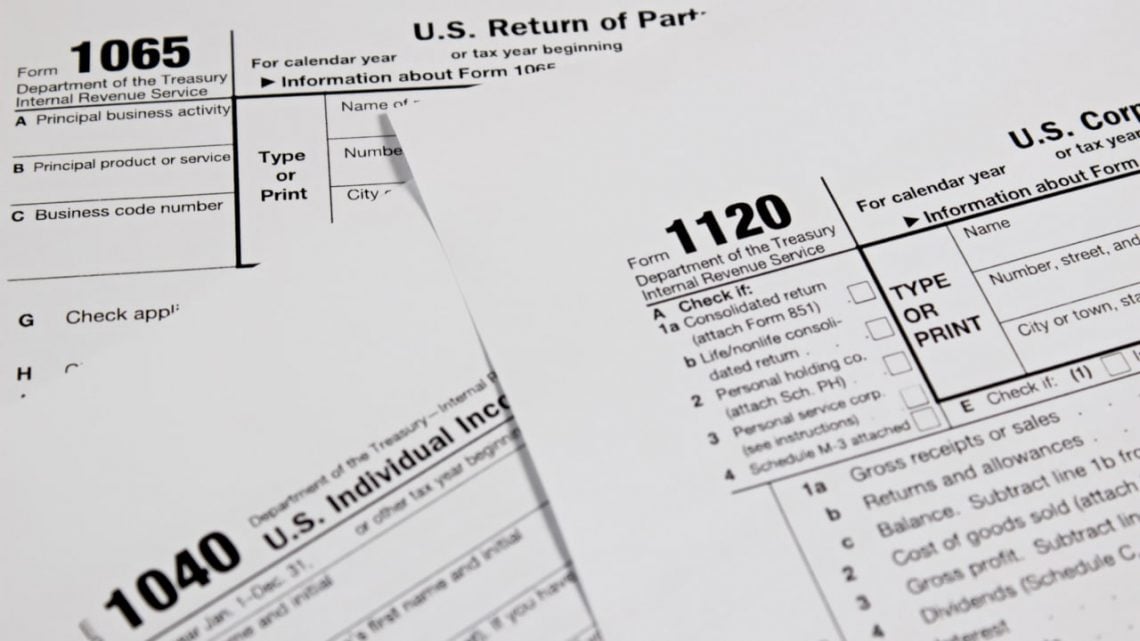With taxes due less than a month away, we thought we’d give you some final tips. If you haven’t filed your taxes already, here are some tips on what you can and cannot deduct.
Less traditional businesses like real estate, freelancing, or rideshare drivers may have unique deductions that they could also be capitalizing on. The key is to maximize deductions while minimizing tax exposure.
Related: Company Mileage Reimbursement Explained
For many, the challenge is that they are not aware of what deductions they qualify for. They also might not know how exactly to take them. We’ll look at some common deductions and general recommendations on how to take advantage of them.
It’s important to note that you should consult your tax advisor or CPA for questions on your specific tax situation.
Common 2025 Tax Deductions #1: Real Estate Deductions
You will most likely be subject to property taxes if you own fixed property, either as a homeowner, landowner, or owner of an office building. In most cases, state and local governments levy property taxes based on the property’s value.
These taxes are usually deductible on federal tax returns and can lessen your tax burden. Entrepreneurs should stay updated about caps associated with real estate tax deductions due to the Tax Cuts and Jobs Act of 2017.
The cap for this deduction in 2025 is $10,000. For real estate purchased in 2025, property tax deductions are only allowed for the period in which you own the property.
If you don’t own any property but paid any real estate taxes as an “equitable” owner, you may be able to deduct real estate taxes paid on that property. An equitable owner is one who has the economic benefit and burdens of ownership.
Related: 10 Most Common Tax Deductions For Small Business
If Airbnb hosts paid taxes on a given property, they could deduct the percentage of the space used as a rental on Schedule E of their tax returns. Itemization of personal taxes may include the ability to deduct the remaining part of their property tax paid on Schedule A.
Common 2025 Tax Deductions #2: Deductions for Home Office
Recent years have resulted in many companies allowing remote or hybrid work schedules. If you’re one of the thousands who have turned a room in their home into an office, you can take the home office deduction.
Individuals working out of a home office dedicated only to their business can deduct a part of their home expenses. You can take a $5 per square foot deduction for each square foot of their home used for business purposes, up to 300 square feet.
Or, you can track home expenses, such as real estate taxes, repairs, maintenance, etc., and take a part of those expenses as a deduction. Expenses that only benefit the home office are 100% deductible as a business expense.
Common 2025 Tax Deductions #3: Deductions for Sole Proprietors
Businesses set up as sole proprietorships are easy to set up and maintain. The only thing a sole proprietor needs to do to begin work is to start working. Despite its simple structure, there are some disadvantages.
Related: Top 5 Tax Tips For Gig Economy Workers In 2025
For one, the individual is liable for business issues rather than having the protection of a corporation. Also, the sole proprietor pays taxes at the personal income rate.
Furthermore, the sole proprietor has to pay extra self-employment tax, such as Social Security and Medicare. The Tax Cuts and Jobs Act of 2017 allows a business income deduction to lower the tax burden.
That deduction can be up to 20% after deducting business expenses dependent on the business nature and taxable income. One benefit of being self-employed is that you only have to file a single return. You won’t need to file separate personal and business returns.

Common 2025 Tax Deductions #4: Deductions for Independent Contractors
Whether the business is a sole proprietorship or a corporation, independent contractors should follow the appropriate tax guidelines. Deductions for sole proprietors are outlined above. For others, it will depend on whether the business is set up as a corporation, LLC, or partnership.
If you are hiring independent contractors, it’s suggested you request they complete a W-9 to ensure you have the necessary information to issue a 1099 at the end of the year. You can deduct payments to independent contractors in several different ways depending on the nature of the work.
Related: Top 5 Must-Know Tips For Independent Contractors
This may include different lines of your Schedule C or your Schedule E. For example, you can deduct payments made to an accountant on line 17 of your Schedule C and payments that were made to a graphic designer on line 11.
Common 2025 Tax Deductions #5: Meal and Per Diem Deductions
The per diem rate is a fixed amount paid to an employee or individual to compensate for expenses incurred while traveling on business. This is used rather than tracking specific or actual expenses incurred.
For employees of companies, the per diem can include meals, lodging, and incidentals. For sole proprietors and the self-employed, the per diem only applies to meal expenses and incidentals, not traveling expenses such as lodging.
This means that you must still keep records for those other expenses. It’s also worth noting that the per diem rate must be multiplied by 50% for each day. An exception would be actual travel days where the per diem can be multiplied by 75% of the rate.
The per diem for sole proprietors and the self-employed varies, depending on the location and sometimes the industry. For example, at the time of this writing, the standard per diem for most states is $178for 2025. The per diem can be much higher for high-cost areas, such as $373 for New York City, $351 for San Francisco, and $368 for Washington, D.C.
Common 2025 Tax Deductions #6: Deductions for Mileage
The IRS provides a mileage deduction rate for companies and individuals who use their vehicles for work. For individuals such as freelancers, rideshare drivers, and sole proprietors, the IRS standard mileage rate might be easier to use than tracking every expense associated with your automobile.
Related: Rideshare Tax Guide: What You Need To Know For 2025
The 2025 standard mileage rate is 70 cents per mile.
Deductions Not Allowed
While there are many deductions available to entrepreneurs, the IRS does not allow certain expenses as deductions. For example, any illegal expenses, fines, penalties to a government agency, lobbying expenses, and certain business assets such as cars or equipment are not deductible.
There are a variety of deductions available for those working outside the more traditional employer-employee relationship. We recommend that you consult with your tax advisor or CPA to ensure compliance with all applicable tax requirements.
Conclusion
Whether you’re an enterprise-scale corporation or a small business needing to track their team’s mileage, using an automatic mileage tracker app will save you thousands of dollars and countless hours of labor.
The best way to automatically track and manage your deductible mileage is with an automatic mileage tracker app like TripLog. Download the app on iOS and Android, or schedule a complimentary live web demo today.








